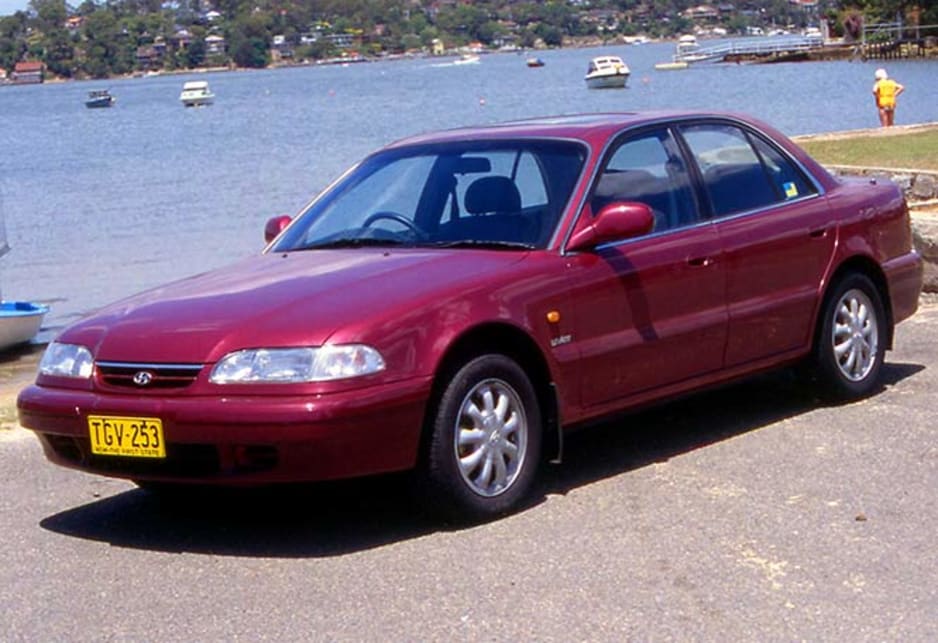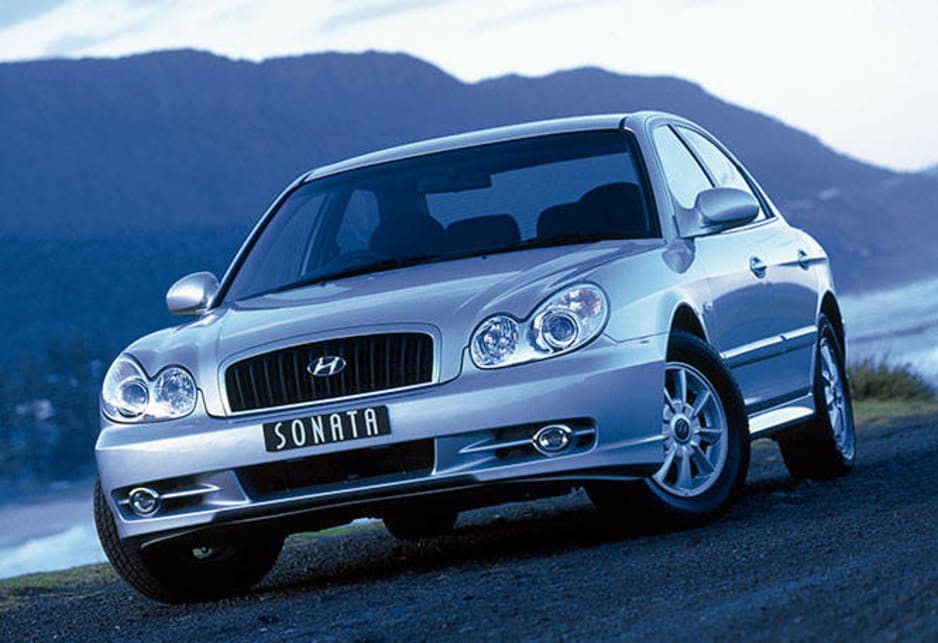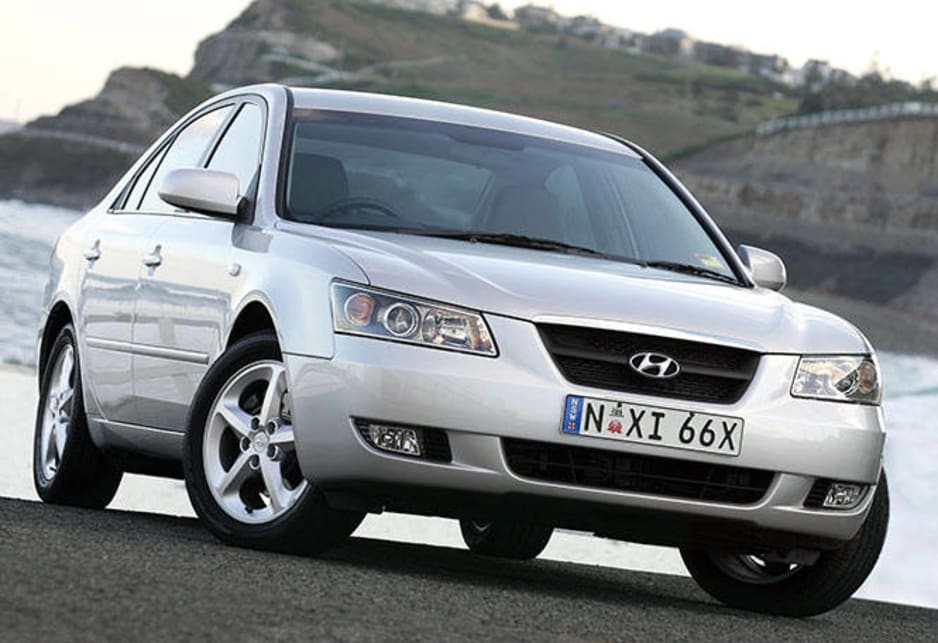
Used Hyundai Sonata review: 1993-2010
- Hyundai Sonata
- Hyundai Sonata 2005
- Hyundai Sonata 2007
- Hyundai Sonata 2008
- Hyundai Sonata 2009
- Hyundai Sonata 2010
- Hyundai Sonata 2004
- Hyundai Sonata 2006
- Hyundai Sonata 1993
- Hyundai Sonata 1994
- Hyundai Sonata 1995
- Hyundai Sonata 1996
- Hyundai Sonata 1997
- Hyundai Sonata 1998
- Hyundai Sonata 1999
- Hyundai Sonata 2000
- Hyundai Sonata 2001
- Hyundai Sonata 2002
- Hyundai Sonata 2003
- Hyundai Sonata Reviews
- Hyundai Reviews
- Hyundai Sedan Range
- Sedan
- Hyundai
- Used Car Reviews
- Buying tips
What we like
- Value used
- Cabin space
What we don't
- Early Hyundai quality concerns
- Polarising designs
What we like
- Value used
- Cabin space
What we don't
- Early Hyundai quality concerns
- Polarising designs
Hyundai Sonata is a medium to large South Korean car that hasn’t enjoyed the sales success of its smaller brothers. It’s popular with those who are happy to give up prestige and dynamic handling and get a lot of car for a modest price.
Styling of the original Sonata was on the unusual side as the South Korean company was keen on establishing its own theme. These were often said to be ‘too Asian’ or ‘too Korean’ by buyers outside the home market, so Hyundai moved to more European lines. There was still a touch of Korean in their shape. Sonata buyers were on the conservative side, hence the not particularly imaginative bodies.
That all changed in May 2010 when a radical new Hyundai ‘Sonata’ arrived in Australia. So great was the change in direction that the name Sonata was replaced by Hyundai i45. Oddly enough, while the style grabbed plenty of attention the Hyundai i45 wasn’t a huge success downunder either. The i45’s main competitor turned out to be the smaller and cheaper Hyundai i40. Imports of the i45 ceased early in 2013.
Sonata is sold only as a four-door sedan. It can hold five adults if they don’t mind a bit of rubbing at the hips. Mum and dad in the front and three children in the rear is a common load and the big Hyundai can handle it with ease. Boot space is good thanks to the use of front-wheel drive, unlike Commodore and Falcon the Sonata doesn’t lose load area because there’s a differential under the rear floor.
Most Sonatas have a four-cylinder engine though a V6 was offered for several years. The six was imported to try and lift the image of the Sonata, perhaps hopefully to entice buyers down from Commodores and Falcons. In a moment of madness, Hyundai dropped the four-cylinder from the range in June 2000, buyers stayed away in droves and the four-cylinder made a comeback in September 2001.
The four-cylinder engines had capacities of 2.0 and 2.4 litres. Both could be mated to a four-speed automatic transmission or five-speed manual.
The V6 began as a 3.0-litre unit, then went back to 2.5 litres with the 1998 Sonata. The 2.5-litre engine is a much more modern, smoother powerplant and is a hidden secret in used-car land. Both sixes sat only sat beside a five-speed auto.
Quality of build is not to the very high standard of Japanese cars. Body finish is usually good enough, but interiors can be on the rough and ready side in older models. They improved rapidly over the years and recent models are far better than the originals. The i45 isn’t being examined in this used-car feature, it will come later. Suffice to say it’s built to a high quality.
Spare parts prices are reasonable and we no longer hear the complaints about availability that bugged the Hyundai range in the earlier years. Hyundai Sonata is relatively easy for the home mechanic to work on, but make sure you have a workshop manual close handy because even simple cars are complicated these days, if that makes sense… We recommend you leave safety-related items to the professionals. Insurance costs for the Sonata are generally low as this isn't the sort of car to appeal to the hoon element.
WHAT TO LOOK FOR
Look in the cabin for signs of poor workmanship and premature wear. These problems are much more likely in older Sonatas than recent ones.
Check the top of the dashboard, the rear parcel shelf and the top edges of the door trim. Also look at the condition of the seat bases and carpet.
The four-cylinder engine normally starts promptly and is reasonably smooth even when cold. The V6 should start equally easily and should be almost imperceptible at idle once it has warmed up.
Automatic transmissions which are slow to go into gear or which have harsh shifts may be due for an expensive overhaul.
Manual gearboxes don't have the smoothest of actions but if you think it’s too bad get a professional inspection.
Be sure the brakes pull the car up evenly and don't grab at any one wheel. If ABS is installed check that there's a pulsing through the pedal as it operates.
Pricing
| Year | Price From | Price To |
|---|---|---|
| 2010 | $4,180 | $9,240 |
| 2009 | $3,960 | $8,910 |
| 2008 | $3,300 | $8,360 |
| 2007 | $3,080 | $6,270 |
| 2006 | $2,530 | $5,390 |
| 2005 | $2,420 | $5,390 |
| 2004 | $2,420 | $4,620 |
| 2003 | $2,420 | $4,180 |
| 2002 | $2,420 | $4,180 |
| 2001 | $2,420 | $4,180 |
| 2000 | $2,640 | $5,170 |
| 1999 | $2,640 | $4,730 |
| 1998 | $2,420 | $4,730 |
| 1997 | $2,420 | $4,510 |
| 1996 | $2,420 | $4,510 |
| 1995 | $2,420 | $4,510 |
| 1994 | $2,420 | $4,510 |
| 1993 | $2,420 | $4,400 |
Pricing guides
Range and Specs
| Vehicle | Specs | Price* | |
|---|---|---|---|
| GLE | 3.0L, ULP, 4 SP AUTO | $2,640 – 4,070 | 1993 Hyundai Sonata 1993 GLE Pricing and Specs |
| GLS | 3.0L, ULP, 4 SP AUTO | $2,420 – 3,850 | 1993 Hyundai Sonata 1993 GLS Pricing and Specs |
| Levant | 3.0L, ULP, 4 SP AUTO | $2,860 – 4,400 | 1993 Hyundai Sonata 1993 Levant Pricing and Specs |
$2,640
Lowest price, based on third party pricing data









